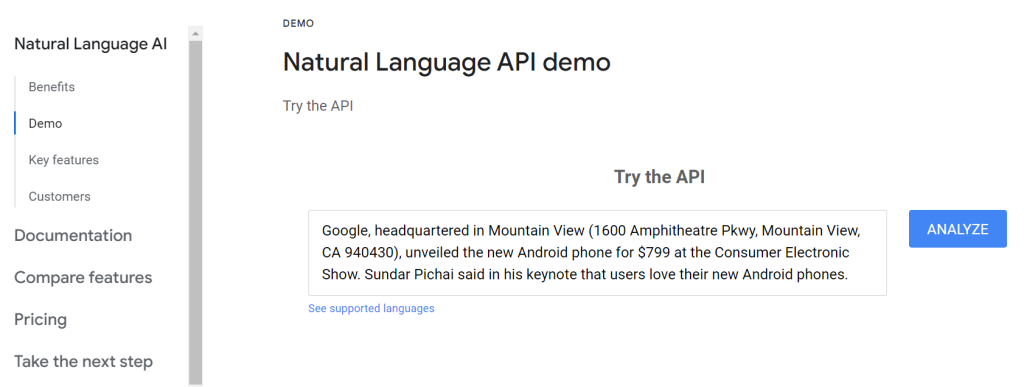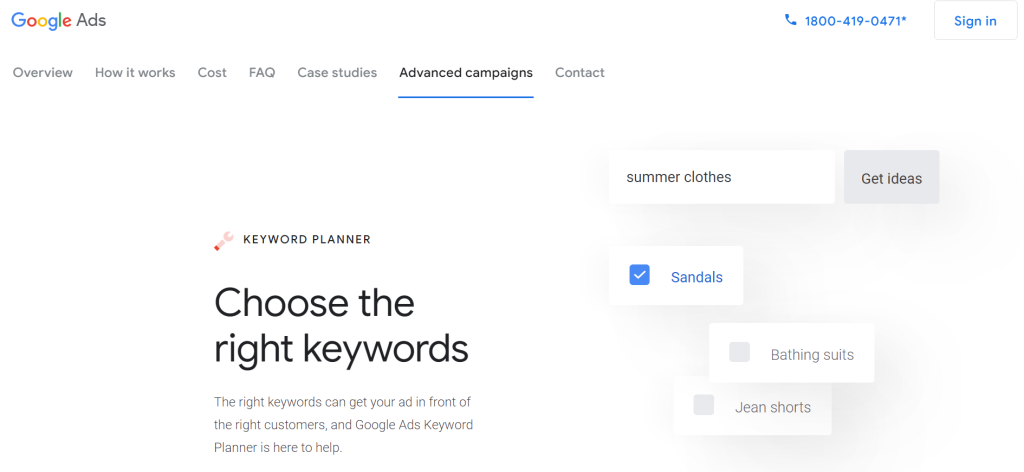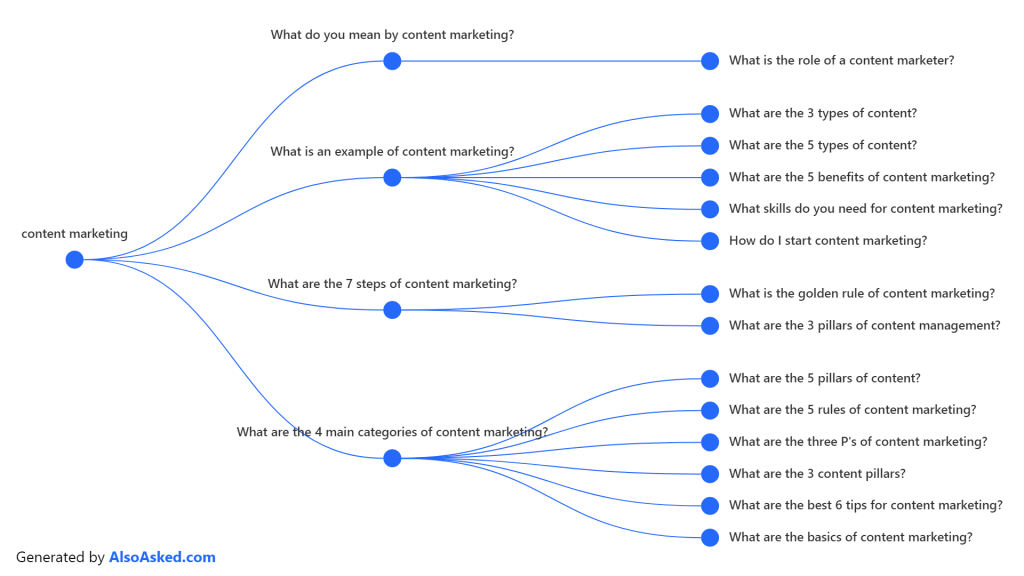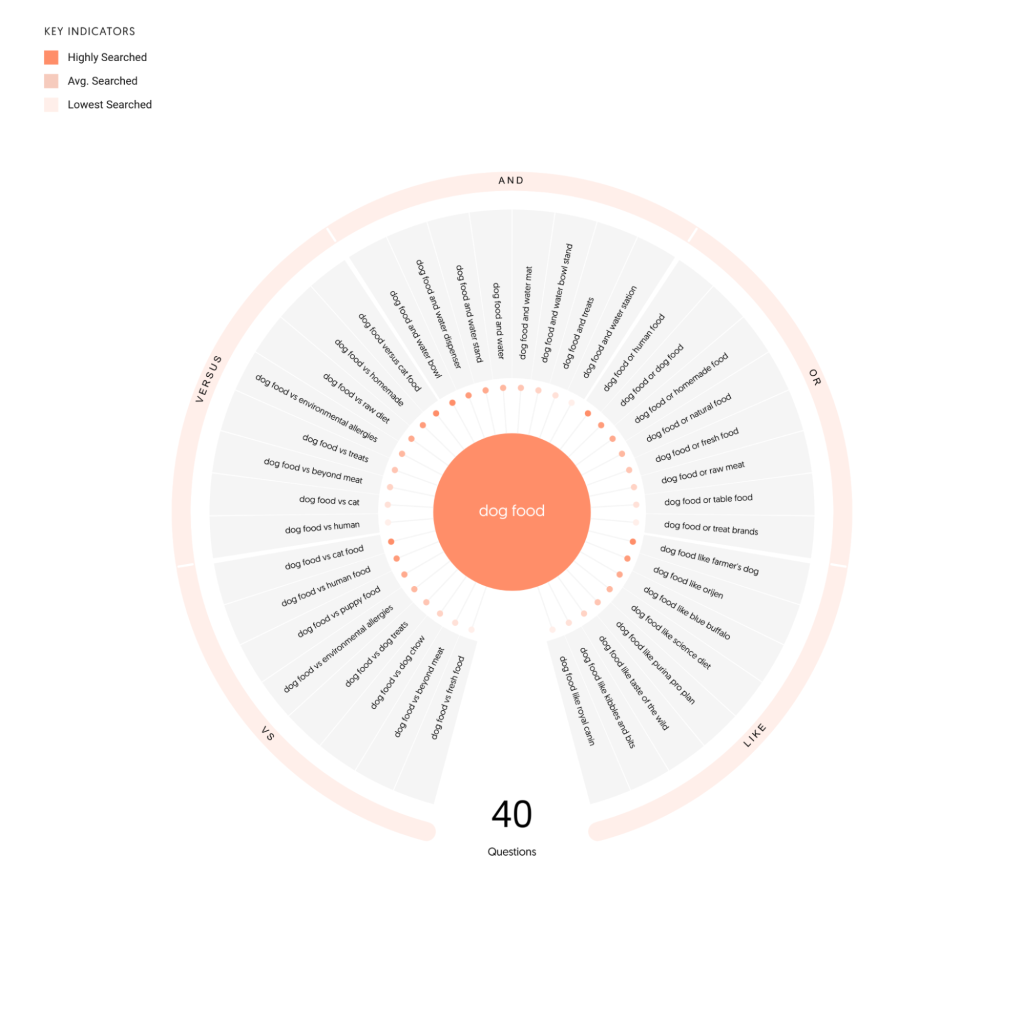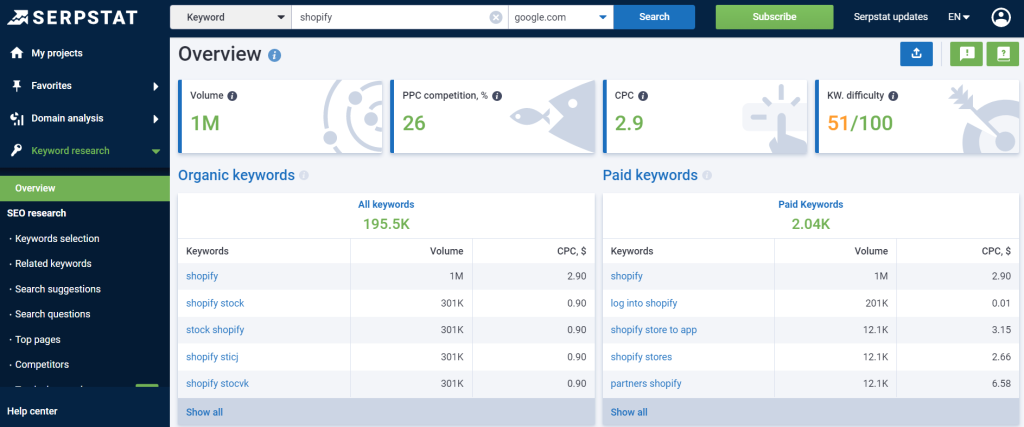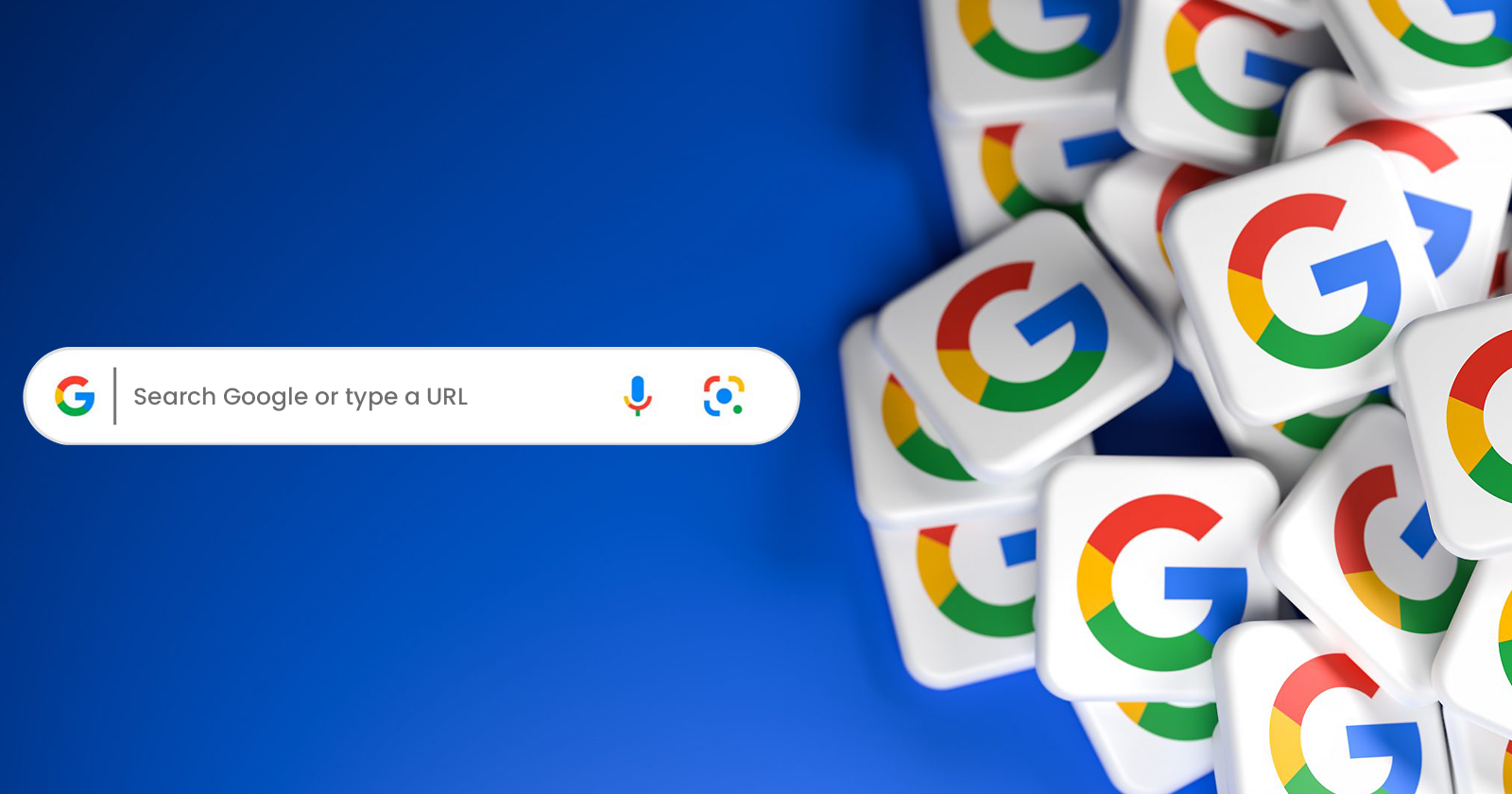Google’s index contains 30 trillion web pages, but only ten appear on the first page for any search query. In order to rank on the first page, SEOs constantly look for ways to get ahead of the competition, and one of the most recent trends is LSI keywords. What are LSI keywords? How might you involve them in SEO optimization? And why have they become so popular among professionals providing SEO services? This post will answer these questions which will help you in creating content that will rank higher on SERPs.
What is Latent Semantic Indexing?
Computer programs can use the technology of Latent Semantic Indexing (LSI) to determine the connection between various words. For individuals, determining the significance of a word in view of its context is easy. Computers, on the other hand, need some training to understand that even though words have different meanings, they can be relevant to each other depending on the context. Latent Semantic Indexing is the term we use to describe this training.
LSI aids computers in understanding languages in a manner comparable to that of humans by utilizing Natural Language Processing (NLP). Theoretically, LSI aids search engines in identifying the links between your page’s words for SEO purposes. It is presumed that the search engine will consider your page more relevant to broader search queries if it can locate numerous LSI keywords on it.
What are LSI Keywords?
LSI keywords are phrases or words that Google associates with your primary keyword. Understanding that LSI keywords are not synonyms for your keyword is essential. Instead, they are phrases that make it easier for search engines to understand the context of the content you create. If your keyword is cricket, some LSI keywords might be glove, lbw, midfield, and so on. Why? Well, Google would expect to see these words in a cricket related article. It helps show that the article is pertinent and contains quality data.
Remember Google is a robot. It helps readers comprehend the article’s overall meaning by utilizing word-to-word relationships. It would not only help Google determine that your article is relevant but also of a higher quality if we were able to incorporate the words and keyword phrases that Google anticipates appearing in an article on a particular subject. All of this makes ranking easier and more likely.
How LSI Keywords Work?
Your content’s individual words are not recognized by your computer. It is unable to decipher related terms or synonyms. For instance, your computer will not comprehend that the words “dogs” and “pets” have the same meaning if you combine them. LSI is useful in this situation. Utilizing mathematical formulas to establish connections between various terms, helps bots in comprehending content in a contextual way. Your computer will identify terms like “shampoo”, “straightener,” “dandruff” and so on if you run LSI on a document that is related to hair care. This is because these words are semantically related to each other even though they are not synonyms for hair care.
Advantages of Using LSI Keywords
LSI keyword-driven content can have a number of advantages for SEO and the user experience.
- The primary objective of a search engine is to provide users with useful and relevant content. Your content is more valuable and relevant if you use LSI keywords. So, no matter what your target keyword is, your search engine rankings will always rise for semantically related searches.
- As the content is new and highly relevant, more people are likely to read and share it. As a result, over time, its credibility will only grow. It will set your content apart from the rest, particularly the standard content that fills the majority of the web.
- More time spent on your website by visitors who enjoy your content is good news for you. They might even check out some of your other links. Due to the varied use of LSI keywords, a natural and conversational tone is essential for keeping your target audience glued to the screen.
- LSI-driven content is highly targeted. It never fails to reach the intended audience. As a result, it decreases the bounce rate and improves engagement. In the end, all of these advantages result in improved SEO and enhanced user experience.
Keyword Density
One of the primary methods used to determine a website’s search ranking in the early days of SEO was keyword density. In layman’s terms, keyword density is the ratio of the number of times a phrase or keyword appears to the total number of words on a website. For instance, a page’s keyword density is said to be 3% if a search phrase appears six times in a paragraph of 200 words. It was used to figure out if a website was relevant to a particular search query. Naturally, websites were thought to be more relevant to the search term if they had a higher keyword density.
Unfortunately, this led to keyword stuffing very quickly. Marketers made unlimited use of focus keywords without considering the context. As a result, web pages frequently achieved higher rankings while delivering little value to readers. Keyword density was no longer taken into account by search engines like Google as a factor in SEO as new algorithms became available. Instead, they started focusing on a website’s relevance and context for ranking. It also began using keyword stuffing to penalize websites.
Hummingbird and Rankbrain
In recent years, Google has begun employing Hummingbird and Rankbrain, two cutting-edge algorithms. The memory unit is called Hummingbird. It creates an entity base by listening to search queries and reading web pages and schema. Because of this, Google ranks only entities rather than web pages. The artificial intelligence known as Rankbrain achieves the highest correlation between Hummingbird’s nested entity database and search queries. It produces the appropriate search results and can comprehend the meaning of the query. It makes an educated guess about your search intent based on your search activity, what you like, browsing time, and online behavior.
What Role Do LSI Keywords Play?
It would be difficult for Google and other search engines to determine a connection between search terms and your website’s content without LSI keywords. In other words, you should use LSI keywords throughout the page rather than repeatedly using the focus keyword. Despite their apparent similarity, LSI keywords are distinct. You won’t be penalized for keyword stuffing, so you can use them more often. They also let you make content that has conversations and can talk directly to users. As a result, utilizing LSI keywords is advantageous to the brand, customers, and search engines all at once.
How to Find LSI Keywords
With the fundamentals of LSI keywords out in the open, it’s time to learn about LSI finder tools.. We have compiled a list of 12 tools that when combined with other SEO tools will enable you to effectively uncover targeted words and phrases – giving an invaluable boost to your SEO strategy!
Related Searches on Google
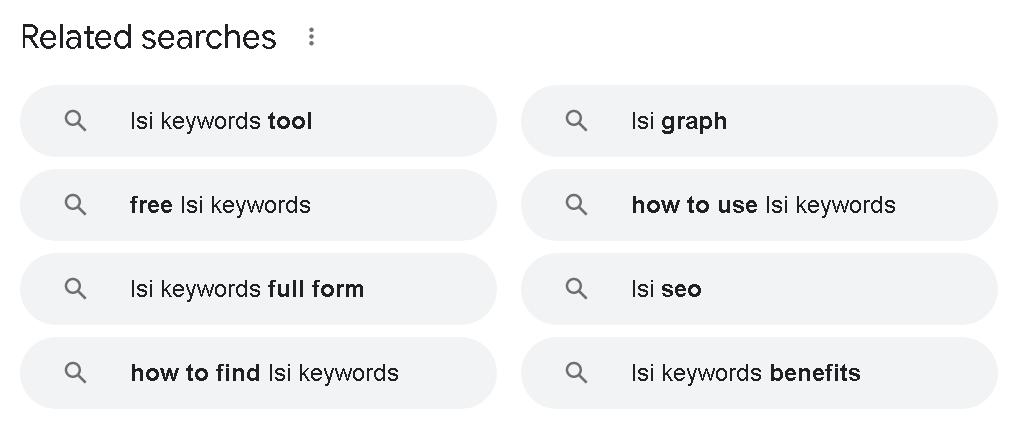
Google’s results pages are a good place to start learning how to find LSI keywords. For any search query, the “People also looked for” and “Related Searches” sections can be examined. You can find all of the various search terms that other users are using to search for your primary keyword here.
By also concentrating on the phrases that appear when you type in your primary keywords in the Google search bar, you can take this a step further. Although this method may appear mechanical, it can assist you in locating the best LSI in SEO for your website.
Below, you can see the related search results for the words “lsi keyword”.
Google Autocomplete
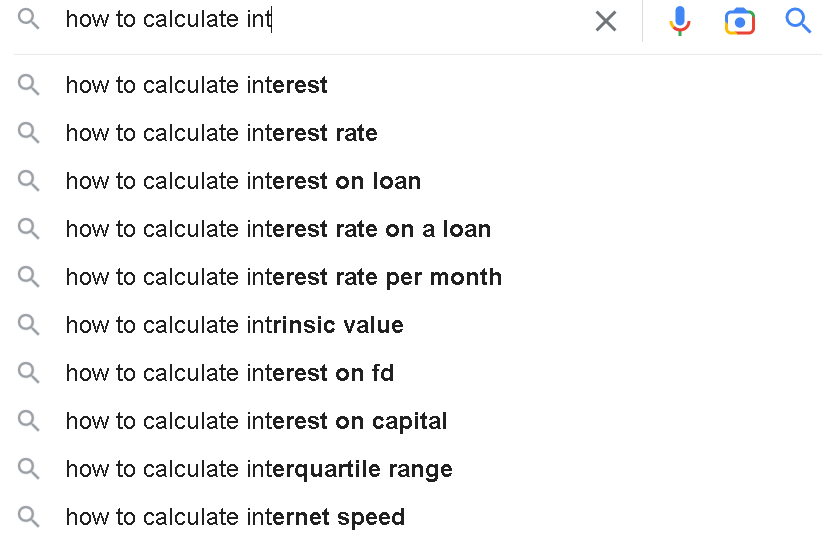
Finding LSI keywords is frequently made easier by using Google’s autocomplete results. Although they may not always display the significantly related keywords that are found in keyword research tools, they can provide you with a solid indication of the ones that are important enough to be mentioned. Google autocomplete can likewise give you thoughts for finding pertinent long-tail keywords, which can be used for SEO. For instance, if your subject is “house cleaning services in India,” autocomplete can assist you in locating the related terms that are most frequently searched for, such as “house cleaning services in Bangalore” and “affordable cleaning services in India”. The below image shows the autocomplete options before you finish typing in the query.
Bold Text in Google Snippet Description

Snippets in the search engine results pages (SERPs) are one of the ways you can find LSI keywords on Google. Google features a few terms in bold that match your keyword. Google also highlights the phrase “pizza base” and “pizza crust” in bold when you enter the main keyword “pizza dough,” as you can see from the below image. Because of the close connection between these terms, you can include “pizza base” and “pizza crust” in your list of LSI keywords for “pizza dough.” Google expects you to incorporate these LSI keywords into your content. By looking at various pages on the SERP, you can identify many keywords like these.
Google Image Tags

This is a treasure trove for discovering LSI keywords. Simply enter your primary keyword into the Google Images search bar, and a number of related terms will appear immediately above the search results. Here, you can view all the most looked-for terms connected with your keyword. Google Images contains a wealth of LSI keywords if adequately utilized. Add your keyword to Google images. Let’s proceed with the keyword “SEO” for this example. The screenshot below demonstrates that Google displays related terms in the top panel. You can use any one of these LSI keywords to improve your content.
Also Read: Image SEO: How to Optimize Images for Google Image Search SEO?
People Also Ask on Google
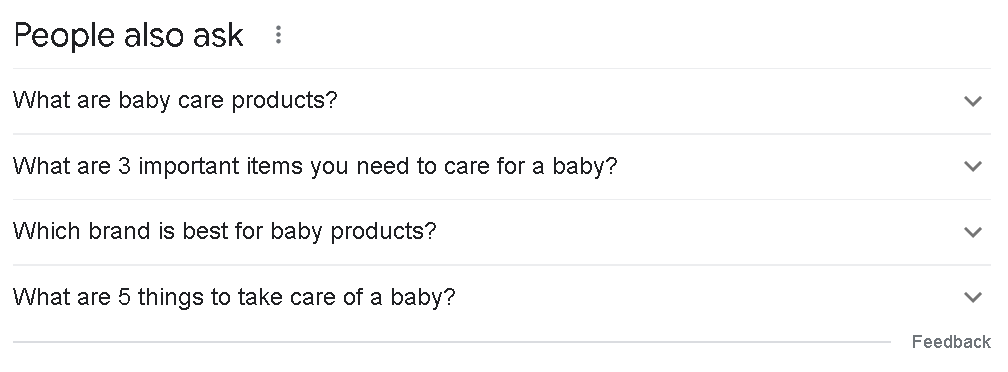
On SERPs, there is a section called “People Also Ask” that can be used to find not only LSI keywords but also things that are related to the subject. Take a look at the People Also Ask section when you search for your primary keywords on Google. The fact that Google frequently bolds the most relevant terms beneath these boxes is another significant advantage of doing so. You might be able to use this as a good vantage point to develop related content or incorporate those concepts into your web pages. The below image shows the “people also ask” section for the query “child care products”.
Google Knowledge Panel
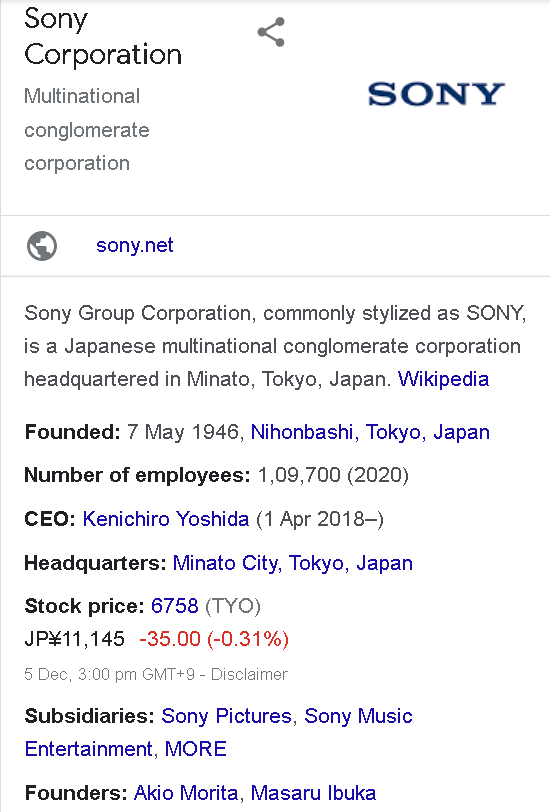
It’s always a good idea to check if a person, thing, or idea has its own knowledge panel on Google before creating content for them. The most popular data points that Google associates with your search term are displayed in the knowledge panel. You can find some extremely useful LSI keywords by analyzing the content in the knowledge panel. Below, you can see the knowledge panel in Google for the company “Sony”.
Natural Language API
Utilizing Google’s Natural Language API you can determine if you have missed anything when it comes to finding LSI keywords. Simply visit Google, enter your keyword, and then copy the text from the first result. If you paste it into the API demo, you can look for any entities or terms you missed.
Google Keyword Planner
Utilizing Google Keyword Planner is yet another efficient and convenient method for locating LSI keywords. It produces outcomes that include a number of keywords for related search terms, such as phrases, words, and search queries. Additionally, using this tool is very easy. Simply enter your target or focus keywords, and you can see which terms have the highest search volumes and low competition among the results. This can be used to come up with solid LSI strategies for your SEO, which can help you come up with compelling content that will get your website the most traffic.
LSI Tools
- LSI Graph

The LSI Graph tool can be used by businesses to find numerous search terms that are related to their primary keywords. The purpose of the tool is to search the internet for related terms with the highest volume of searches. You can use this to determine which LSI keywords to include in your content. One important thing to note here is that the LSI Graph tool might tempt you to use as many LSI keywords as possible. This can prompt keyword stuffing. Therefore, keep the number of keywords to a minimum and reserve some for the creation of related content.
- AlsoAsked
To generate geo-specific related questions, the alsoasked tool scrapes Google’s SERP results for “People Also Ask”. The tool is a treasure trove of related search queries, and its output is appealing to the eye. For large-scale LSI keyword research, you will need a paid plan because the website offers limited free searches.
- AnswerThePublic
Although Answer The Public is best known as a keyword suggestion tool, it can also serve as an LSI keyword generator by providing you with related words for each search query. Questions, keywords with prepositions, comparisons, an alphabetical list of keywords, and related keywords are all generated by this tool. The keywords can be downloaded as a CSV file, while images can be saved as pictures, and all of these can be displayed visually or in list form. Despite the fact that the related keywords section only contains around 20 keywords, you can find sufficient related keywords to use in your content with the assistance of the other suggested keywords.
Also, Read: 11 AnswerThePublic Alternatives Compared
- Serpstat
Serpstat is a comprehensive SEO platform with five tools. Backlink analysis, rank tracking, keyword research, competitive analysis, and a site audit. It has many features that can assist you in discovering numerous LSI keywords. The related keywords report lists search queries that are semantically related to the query that was investigated. Search ideas are well-known search inquiries that spring up under the pursuit bar as you begin composing your keyword at Google. Google’s search suggestions come in the form of interrogative search questions.
How to Use LSI Keywords in Content Naturally?
The clearest method for including LSI keywords in your content is to place them in the sub-headings and body of the content. When these keywords are used as anchor text and in the first and last paragraphs of your content, they are especially useful. However, relevance does not end there. Latent semantic indexing keywords can also be included in the places like title tags, meta tags, alt tags, header tags, captions under images, and image file names. But, you shouldn’t start stuffing them everywhere because doing so will probably hurt your cause. But it’s a definite way to help Google’s algorithms understand exactly what your content is about if you naturally incorporate them in your content.
Importance of LSI Keywords
Because they assist search engines in better comprehending and indexing your content, LSI keywords are significant. As a result, your pages will be more likely to appear in search results for relevant queries. Keep in mind that Google makes connections between the various keywords used in an article to comprehend its meaning or context. Add relevant words or phrases to your primary keyword to create LSI keywords, which provide additional information on the topic.
You can use the keywords that Google uses to find articles on a particular subject to increase the value of your content. It will not only make your post more relevant, but it will also increase the likelihood that it will rank in the SERPs for the keyword you want to target.
LSI Keywords for Search Engines
Latent semantic indexing keywords were first used by search engines for two main reasons. The original method for determining content relevance, known as “keyword density,” was widely abused because it helps Google and other search engines achieve their ultimate goal of providing searchers with precisely what they are looking for. When Google first started trying to determine relevance in searches, they looked at how many times a particular keyword was included in a particular piece of content.
Consequently, website owners simply stuffed their content with keywords they wanted to rank for. This method weakened the quality of the content and introduced a tremendous issue to the eventual fate of search engines. However, Google was able to solve this issue while also assisting searchers in obtaining the relevant results they desire and require for their queries by switching to LSI keywords and other efficient methods of determining relevance.
Tips to Select the Best LSI Keywords
Finding an LSI Keyword is simple. The problem lies in selecting keywords that are most relevant to your content and have a reasonable amount of search volume. However relevant your lsi keyword is, if it is not in demand, no one will look for it. Therefore, you must first comprehend why someone is looking for the particular item or information. The next step is to locate keywords that are pertinent and can be naturally incorporated into the content.
Decide the Intent
A user typically intends to find Information at first. In this instance, individuals wish to learn more about the topic at hand. The majority of their queries concern general information. For instance, people might want to know what a website is and why you need one. Then, they would try to navigate. This kind of search query frequently indicates a clear path. In this instance, people may be interested in learning about the best WordPress website building platform or e-commerce website building platform. Finally people will decide on transacting. People will use search phrases with a transactional intent when they want to carry out a particular task. It might be about hiring a web design company to help them meet their needs, when they face issues trying to build a site on their own.
Look for Context
Naturally, you must employ highly relevant LSI keywords for your content. Your page won’t be able to be indexed or ranked in the Search Engine Results Pages (SERPs) until that point. Using LSI keywords like “small business website design,” “cheap business website builder,” “website development,” and “website hosting,” for instance, makes sense if you provide website design and development services for small businesses. Not all keywords will naturally appear in the content. Therefore, you should use only those that seem meaningful and natural. Examine the text with care to see if everything makes sense. Anything that doesn’t belong is out. The next thing you need to watch out for is overusing LSI keywords in the content. Avoid using a single LSI keyword more frequently than other keywords as a precaution. Be sure to distribute them evenly throughout the content.
What is TF-IDF?
A statistical measure known as TF-IDF (term frequency-inverse document frequency) determines how relevant a word is to a document in a collection of documents. This is calculated by multiplying the two metrics; how frequently a word appears in a document, as well as the word’s inverse frequency across a collection of documents. It is very useful for scoring words in machine learning algorithms for Natural Language Processing (NLP), and among its many uses is automated text analysis.
For the purpose of document search and information retrieval, TF-IDF was created. It works by increasing in proportion to the number of times a word appears in a document, but the number of documents containing the word offsets this effect. Therefore, even though words like “this”, “what”, and “if” are found in every document, they do not rank highly because they have little significance for that particular document.
How is TF-IDF Calculated?
For each word in a document, the TF-IDF is determined by multiplying the following two metrics.
Term Frequency
The number of times a word appears in a document. The most straightforward method for determining this frequency is to count the number of times a word appears in a document. The length of a document or the raw frequency of the most frequently used word in a document can then be used to adjust the frequency.
Inverse Document Frequency
The word’s inverse frequency across a set of documents. This indicates how prevalent or uncommon a word is across the entire document set. The more the value is nearer to 0, we can conclude that the word is more normal. The logarithm can be used to determine this metric by dividing the total number of documents by the number of documents containing a word. Therefore, this number will be close to zero if the word is very common and appears in a lot of documents. If not, it will get close to 1. The TF-IDF score of a word in a document is the product of multiplying these two numbers. The more relevant a word is to that particular document, the higher the score.
Conclusion
Even though businesses are not very familiar with Latent Semantics Indexing (LSI), it is useful for improving website rankings. Therefore, businesses can hire an expert SEO company to fully utilize the potential of LSI keywords. SEO experts have a lot of SEO experience, so they can help you find the best LSI keywords for your content. Additionally, they can also assist you in developing the best SEO strategies for your business.
FAQs
Are there any downsides to LSI keywords since Google has mentioned LSI is not important?
There aren’t necessarily any drawbacks to using LSI keywords. But use them only where it feels natural, and don’t stuff them in your content, causing keyword stuffing.
Where can I use LSI keywords in my content?
LSI keywords can be used in title tags, meta description, image alt text and sub headers.
Where can I find LSI keywords for my content?
The easiest way to find LSI keywords for your content is from Google Autocomplete, Google Related Search, Google Image Tags and People Also Ask on Google. There are also many LSI keyword generator tools like LSI Graph, AnswerThePublic, Serpstat.

